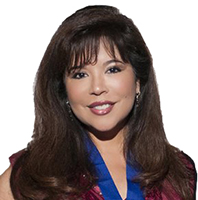A Multigenerational Classroom

Most online instructional programs are available to students nationwide and, in some cases, globally, so your classroom will likely contain a range of age groups and cultures. When instructing a multigenerational class, it is essential to recognize the differences between students of each generation. There are currently four main generations with careers or presently attending college: (1) Baby Boomer Generation, (2) Generation X, (3) Generation Y, and (4) Generation Z.
Baby Boomer Generation—Baby boomers were born between 1946 and 1964 and adopted their name because more babies were born in 1946 than ever before. The increase in birthrate resulted from couples postponing marriage and childbirth during the Great Depression and World War II. After WW II couples felt more secure about their futures, so procreation flourished and continued for years before finally tapering off around 1964.
Generation X—Generation Xers, commonly referred to as Gen X, the Pacman Generation, or the post-baby boomer generation, were born between 1961 and 1981. Generation Xers represent a smaller portion of the population than the baby boomer generation, are educated, and are more ethnically diverse.
Generation Y—Generation Y is commonly referred to as Gen Y or the Millennial Generation. The Gen Y population was born between 1977 and 1994 and is considered part of the pre-Internet era. Compared to other generations, Gen Y has the most significant employee population, averaging around seventy million or more. Raised with more conveniences and opportunities, Generation Y kids had dual-income families.
Generation Z—Unlike previous generations, the Generation Z population was born between 1995 and 2015, known by a variety of naming conventions originating from the use of technology. Synonyms for Gen Z include Net Gen, Google Generation, iGeneration, Digital Natives, Generation Q (Quiet), Generation Now, and Millennials. It is safe to say that Gen Z members tend to have more than one “life” identity, their physical and virtual identities.
Multigenerational classrooms can create a more enhanced learning environment by allowing students to share more about themselves during discussions or activities, particularly in higher-learning coursework. Try to revise teaching strategies to increase the effectiveness of classroom activities. Ask open-ended questions that motivate students to discuss their generational or cultural views. Open questions will create a more shared learning environment and enhance dialog relevant to generational differences. Doing this will help prepare younger students for better working relationships once they hit the multigenerational workforce.
Learn More About Patricia's books at www.PatriciaPedrazaNafziger.com.
Baby Boomer Generation—Baby boomers were born between 1946 and 1964 and adopted their name because more babies were born in 1946 than ever before. The increase in birthrate resulted from couples postponing marriage and childbirth during the Great Depression and World War II. After WW II couples felt more secure about their futures, so procreation flourished and continued for years before finally tapering off around 1964.
Generation X—Generation Xers, commonly referred to as Gen X, the Pacman Generation, or the post-baby boomer generation, were born between 1961 and 1981. Generation Xers represent a smaller portion of the population than the baby boomer generation, are educated, and are more ethnically diverse.
Generation Y—Generation Y is commonly referred to as Gen Y or the Millennial Generation. The Gen Y population was born between 1977 and 1994 and is considered part of the pre-Internet era. Compared to other generations, Gen Y has the most significant employee population, averaging around seventy million or more. Raised with more conveniences and opportunities, Generation Y kids had dual-income families.
Generation Z—Unlike previous generations, the Generation Z population was born between 1995 and 2015, known by a variety of naming conventions originating from the use of technology. Synonyms for Gen Z include Net Gen, Google Generation, iGeneration, Digital Natives, Generation Q (Quiet), Generation Now, and Millennials. It is safe to say that Gen Z members tend to have more than one “life” identity, their physical and virtual identities.
Multigenerational classrooms can create a more enhanced learning environment by allowing students to share more about themselves during discussions or activities, particularly in higher-learning coursework. Try to revise teaching strategies to increase the effectiveness of classroom activities. Ask open-ended questions that motivate students to discuss their generational or cultural views. Open questions will create a more shared learning environment and enhance dialog relevant to generational differences. Doing this will help prepare younger students for better working relationships once they hit the multigenerational workforce.
Learn More About Patricia's books at www.PatriciaPedrazaNafziger.com.

Related Articles
Editor's Picks Articles
Top Ten Articles
Previous Features
Site Map
Content copyright © 2023 by Patricia Pedraza-Nafziger. All rights reserved.
This content was written by Patricia Pedraza-Nafziger. If you wish to use this content in any manner, you need written permission. Contact Dr. Patricia Pedraza-Nafziger for details.







